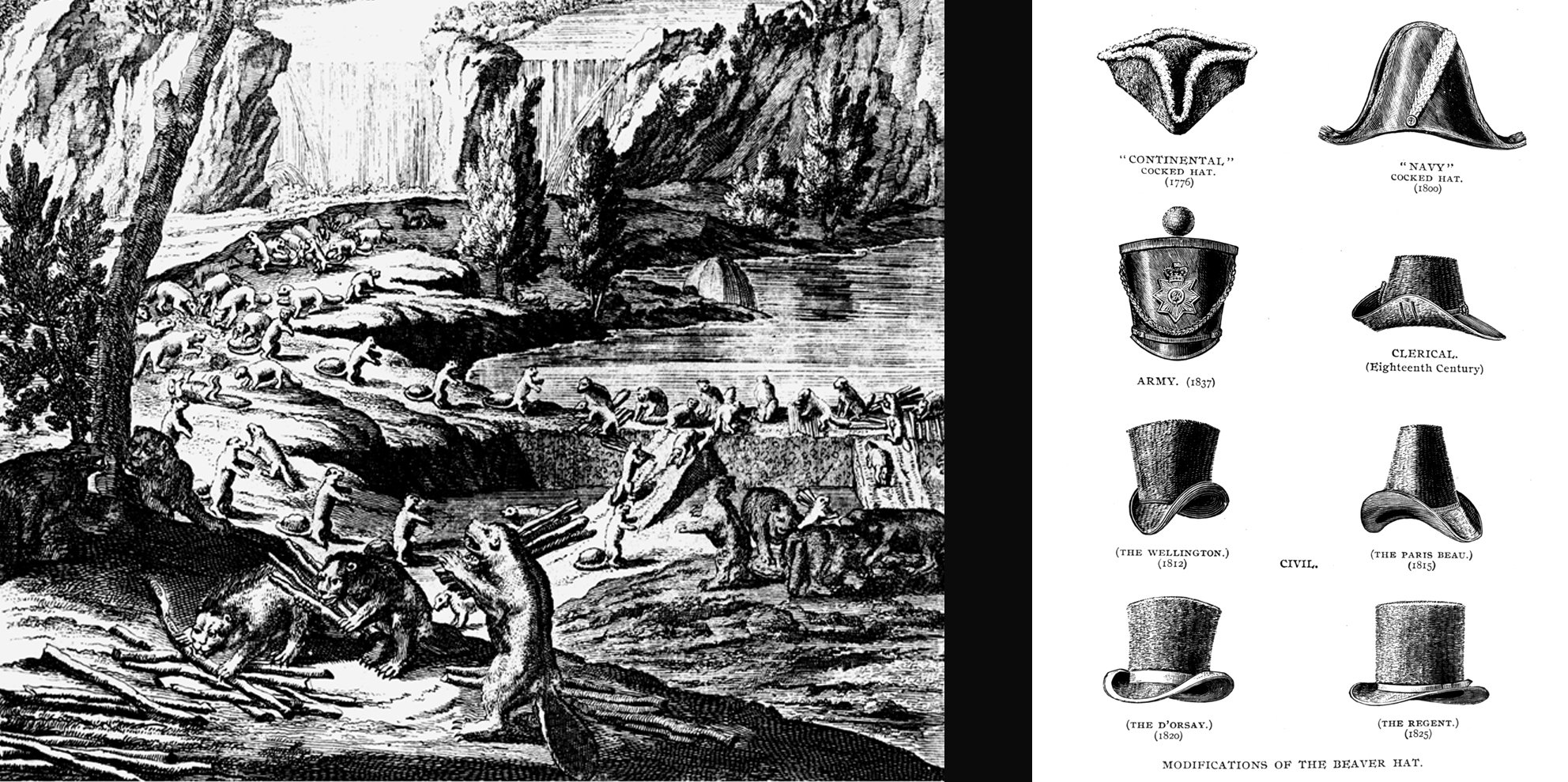Beaver Hats to Hockey Pads: A Social History of Felt in Canada: Part 1
Pelts and Felts
A vagary of fashion that brought prosperity to a nation but destitution to native life long before Confederation…
LEFT: image from the map “The Dominion of Great Britain on ye Continent of North America” by Herman Moll, 1715 (National Archives of Canada)
RIGHT: Modifications of the Beaver Hat
A beaver hat, or castor in French, is a felt hat made from the short downy fur of a beaver’s undercoat, and was a well-established fashion in Europe during the 1500s. Its popularity grew with the abundant supply of beaver “discovered” in the New World, and became highly regarded as a symbol of power and wealth, made from the finest of felts.
Beaver pelts worn by the Northern First Nations were the most prized of all because the coarse guard hairs, which would otherwise have to be removed before felting, were worn off from use. These called “made-beaver” or “castor gras”— an adult beaver pelt prime in quality and condition— became the unit of exchange for European goods through the fur trade.
In England, labour was organized around processing pelts, and The Worshipful Company of Felt-makers was established in 1629 to regulate increasing trade. The French and English competed for profits in the co-called “new world,” making alliances with indigenous peoples who they depended upon for their supply and survival. Ultimately The Hudson’s Bay Company, founded in 1670, with the privilege of colonial power endowed by virtue of Royal favour, achieved a monopoly over the land from Hudson’s Bay to the Rocky Mountains.
The fur trade laid the foundation for Canada’s development, but was devastating to the First Nations’ ways of life. The cavalier-style beaver hat, favoured by the early traders, represented the spirit of the times. KW
